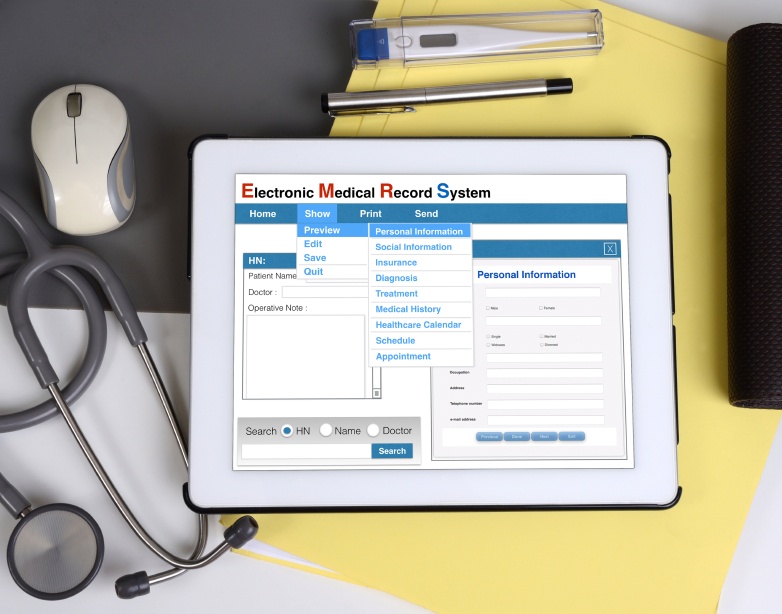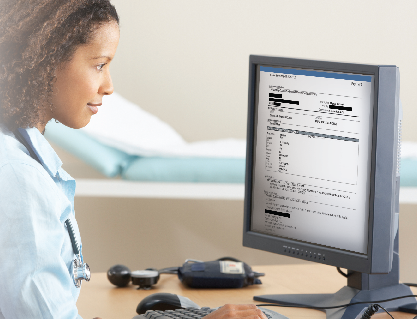In the course of a clinical research project or trial, researchers must gather patient data and records and prepare them for adjudication and analysis. In keeping with the spirit of HIPAA and PHI regulations, the organization conducting this research or trial likely wishes to control access from both within and outside of its firewall to ensure that any potential for breach of this personal information is strictly curtailed.
Read MoreEllen Bzomowski
Recent Posts
Posted by Ellen Bzomowski on Aug 24, 2015 4:53:00 PM
You finally found the perfect solution to the problem of getting data out of documents and into your EMR or other system. It’s a system that automates this data entry and the workflows surrounding the entire document handling and quality assurance processes. So, now it’s time to go ask for permission (budget) to purchase this solution.
Read MorePosted by Ellen Bzomowski on Aug 12, 2015 2:28:00 PM
Why do we have EMRs again? Were they meant to be electronic file folders? No, they are meant to hold discrete, structured data and add value by summarizing the most valuable data, giving us a more complete picture of a patient’s history, and allowing us to analyze and see trends in the data while automatically alerting us to data outside of allowed values.
Read MorePosted by Ellen Bzomowski on Aug 5, 2015 3:30:00 PM
You finally found the perfect solution to problem of getting data out of documents and into your EMR or other system. It’s a system that automates this data entry and the workflows surrounding the entire document handling and quality assurance processes. Now it’s time to go ask for permission (budget) to purchase this solution.
In the first and second blogs in this series, we began by detailing the first and most basic area of justification that needs to be laid out, medical assistants’ time and additional staffing requirements and continued by looking at the improvements that are brought to Quality of Care of your patients. What about other effects on all the other clinical staff in your department and organization?
Read MorePosted by Ellen Bzomowski on Jul 30, 2015 4:09:00 PM
You finally found the perfect solution to problem of getting data out of documents and into your EMR or other system. It’s a system that automates this data entry and the workflows surrounding the entire document handling and quality assurance processes. Now it’s time to go ask for permission (budget) to purchase this solution.
In our first blog, we began by detailing the first and most basic area of justification that needs to be laid out, medical assistants’ time and additional staffing requirements. While these are an essential part of your justification, if you stop here, you have not fully laid out the tactical and strategic improvements that this type of system offers your department and organization.
The second area for ROI justification should look at how you will be able to better care for your patients and avoid costs down the road for data errors:
1. Quality of Care improvements:
Read MorePosted by Ellen Bzomowski on Jul 24, 2015 11:30:56 AM
Your department is overwhelmed with data entry. Incoming faxes with lab results and other clinical data swamp your staff. You are beginning to worry about quality of care and data entry errors. Your staff is wondering if they are here to help patients or to improve their typing skills.
So, you finally found the perfect solution to your problem. It’s a system that automates this data entry and the workflows surrounding the entire document handling and quality assurance processes. So, now it’s time to go ask for permission (budget) to purchase this solution.
Read MorePosted by Ellen Bzomowski on Jun 30, 2015 1:35:29 PM
The HITECH Act and Meaningful Use requirements have ushered in a new era of health information management that promises to deliver better care quality, greater efficiency and at a lower cost. It’s also putting more pressure on staff to get clinical data into the EHR data fields. As a result, already strained resources are being strained even more. The health data integration dilemma is especially acute when dealing with external data sources, such as clinical labs that often arrive by fax or are made available via portals.
Read MorePosted by Ellen Bzomowski on Apr 14, 2015 12:07:00 PM
Case finding is a never-ending cycle of review and follow up. It’s an enormous manual effort to abstract data from patient files to populate hospital, central, state or the National cancer database to complete the case entry; as well as checking on the status of cases in suspense and quality control that binds it all together. Though I’m not a certified registrar myself, I definitely get the impression from those that I have spoken with that they continue to be fiercely devoted to the important work they do; and are steadfast in getting it right.
Read MorePosted by Ellen Bzomowski on Apr 7, 2015 5:27:00 PM
When you hear people talk about a Continuity of Care Document (CCD), funny enough, it’s actually usually a “document”. In reality, the specification for a CCD, according to Wikipedia, is “an XML-based markup standard intended to specify the encoding, structure, and semantics of a patient summary clinical document for exchange.” CCDs are important to patient’s treatment, but its original intention of being a way for pertinent patient information to be transferred one system to another has not yet been realized. So, when patients are referred to another physician or if CCDs are trying to be used to convert massive amounts of data from one EHR to a new EHR, the exchange of information is often not seamless.
Read More






